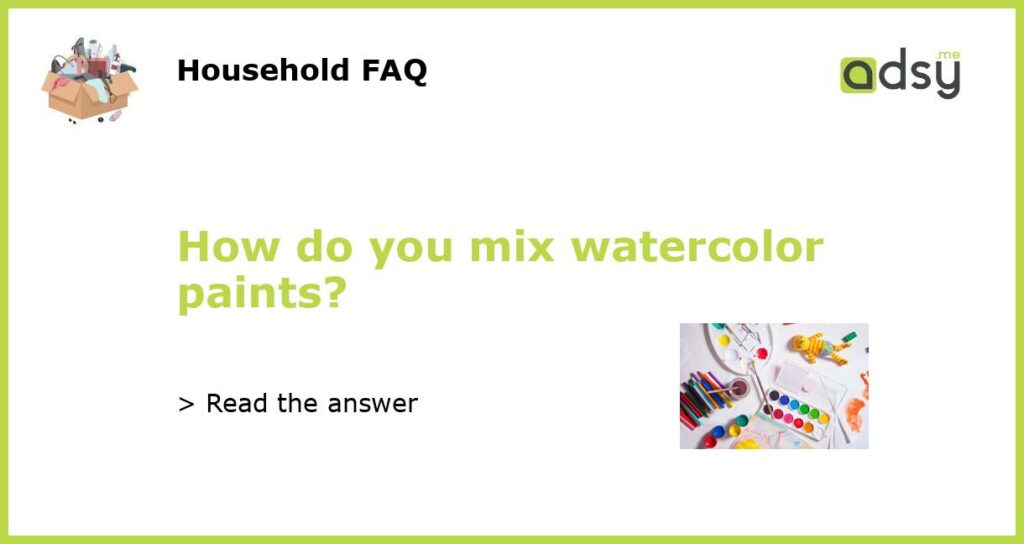Choose your watercolor paints and palette
Before you mix your watercolor paints, you first need to decide which colors you want to use. Watercolor paints come in tubes or pans, and you can choose from a wide range of colors to create your desired palette. You can either purchase pre-made sets of watercolor paints or handpick individual colors that you prefer.
Once you have your paints ready, you will need a palette to mix them on. Palettes can be made of plastic or porcelain and come in different sizes. Choose a palette that suits your needs and has enough space for mixing your paints.
Set up your workspace
Creating a suitable workspace is important when mixing watercolor paints. Find a clean, well-lit area where you can comfortably work and have easy access to your paints and brushes. Make sure to protect the surface you are working on to prevent any unwanted stains or spills.
Fill a cup or container with clean water to rinse your brushes and moisten your paints. Having a separate container for water will help you keep your paints clean and prevent unwanted color mixing.
Start with a clean brush and palette
Before you begin mixing your watercolor paints, ensure that your brush and palette are clean. Rinse your brush in the water container and gently wipe it on a paper towel to remove any excess water. This will prevent unwanted dilution or contamination of your paints.
Clean and dry your palette before starting to mix your colors. This will ensure that your colors stay true and avoid any unwanted mixing of previous paint residues.
Mix colors on your palette
To mix watercolor paints, you will need to use a technique called “wet-on-wet” or “wet-on-dry.” Wet-on-wet involves mixing colors while the paper or previous layers of paint are still wet, while wet-on-dry involves layering dry paint on top of dry paint.
To mix colors using the wet-on-wet technique, start by dampening your palette with clean water. Then, squeeze a small amount of the desired colors onto the palette, leaving enough space between them for mixing. Using a clean brush, pick up one color and mix it with another color on the palette. Experiment with different proportions to achieve the desired shade and intensity.
If you prefer the wet-on-dry technique, start by applying a layer of dry paint on your paper. Once it is completely dry, squeeze a small amount of a different color next to it on the palette. Using a clean brush, mix the two colors together on the paper, creating a new shade.
Test and adjust your mixed colors
After mixing your watercolor paints, it’s a good idea to test the colors on a scrap piece of paper before applying them to your artwork. This will help you gauge the shade, intensity, and color accuracy of your mixture.
If you are not satisfied with the result, you can adjust your mixing by adding more water to dilute the color or adding more pigment to intensify it. Remember to make note of your mixtures for future reference in case you want to recreate specific shades.
Remember, mixing watercolor paints is a process of experimentation and discovery. Don’t be afraid to try different color combinations and techniques to create unique and beautiful artwork.






